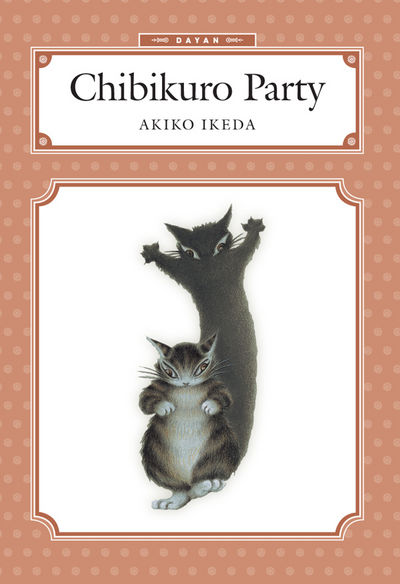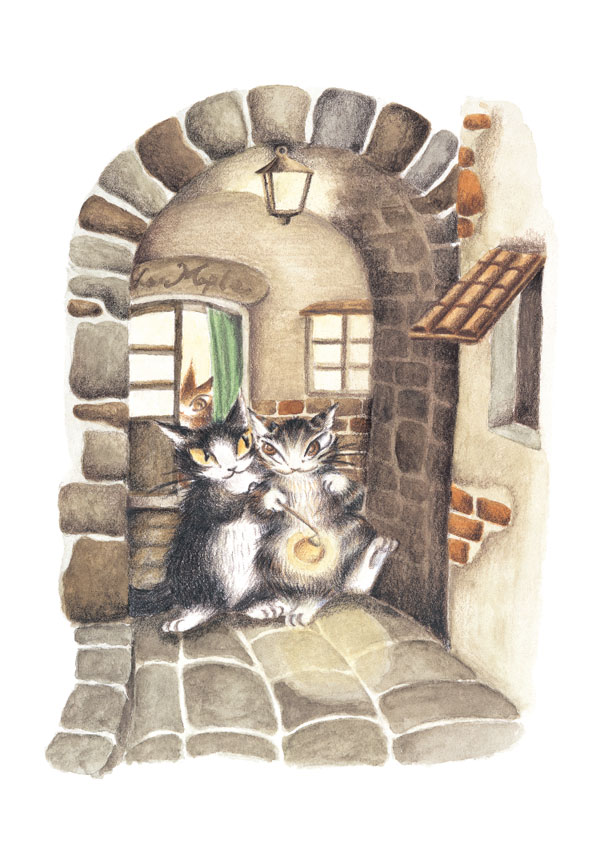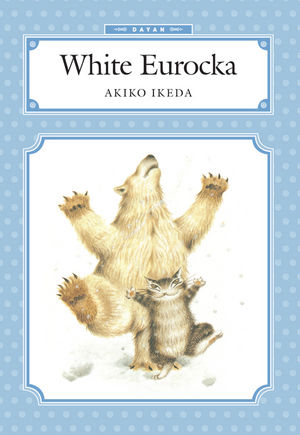 International best-selling author Akiko Ikeda has made the tales of the mischievous cat Dayan and his woodland friends in the magical realm of Wachifield a sensation around the world. Dark Horse brings these adventures to America for the first time in a series of durable children’s books for readers of all ages! We recently had a chance to speak with Akiko about Dayan and the wonderful world of Wachifield. Read on and enjoy!
International best-selling author Akiko Ikeda has made the tales of the mischievous cat Dayan and his woodland friends in the magical realm of Wachifield a sensation around the world. Dark Horse brings these adventures to America for the first time in a series of durable children’s books for readers of all ages! We recently had a chance to speak with Akiko about Dayan and the wonderful world of Wachifield. Read on and enjoy!Dark Horse Comics: Dayan's appeal has not once flagged since he came out nearly twenty-five years ago. His stunning success has translated into an untold amount of merchandise, stores, and a museum that doubles as a theme park. Are you excited about Dayan being published in the United States for the first time?
Akiko Ikeda: I am so excited! I'd been waiting for the day that it would be published in English. Nothing would make me happier than if America and the rest of the English-speaking world can come to love Dayan and the World of Wachifield.

DH: Dayan was first published in 1984, and there are now over thirty books featuring the character. What keeps you interested in Dayan after all this time?
Ikeda: I'd say that Dayan is a cat that has a strong character, and that has certainly had the biggest influence on my interest. I think that, conversely, his creation has helped me to broaden my imagination and keep my creativity fueled.
DH: What was the impetus for creating Dayan? Were you doodling and he just "came from the paper," or was it part of a larger concept?
Ikeda: I had this idea for an imaginary world, Wachifield, and started sketching it, and its main inhabitant Dayan, on pieces of paper with an ordinary pencil. I then began to elaborate on what I had sketched, by doing more intricate pictures using pastels, and meanwhile, the ideas for stories just evolved naturally-one after the other--as I kept drawing.
DH: How about Dayan's friends? Was a character like Jitan (who is now gaining popularity in its own right) something that was meant to be smaller and less significant, but bloomed into a popular character, or did you set out to make a character as pivotal and interesting as Dayan?
Ikeda: Interestingly enough, the pivotal characters were born about the same time as Dayan. Jitan, Ewan, and Marcie, just to name some. Then, depending on what story I was imagining the cast getting into at the time, new characters that eventually showed up here and there began springing up one after another.
DH: Could you tell us something about Tarshier? Did you create the world first and then have the characters explore those places, or did the places come to be in a specific story you were telling, and then added to the world?
Ikeda: Tarshier is the main city--the capital, if you will--of Wachifield. I had been thinking of Tarshier long before I thought of Dayan.
DH: This book is marketed as a children's book, and has been influential on a number of people. Is it rewarding to work in children's literature?
Ikeda: The interesting thing is that I didn't create this to be a children's book; I simply found that the best way for me to express what I wanted to about an imaginary world that I created was to do it through picture books. But of course, I am so happy that so many schools and libraries have received Dayan so well.

DH: Your first readers are now having children themselves. Have you noticed them introducing Dayan to their children, or discovering the character on their own?
Ikeda: I think that there are probably a little of both. Parents' interests obviously spread pretty easily and quickly, and the influence from them is prevalent. But after some time, kids begin to select their own books, so I think that both seem like a pretty natural introduction.
DH: Who were the artists and writers that influenced you?
Ikeda: Maurice Sendak, the Brothers Grimm, and Pieter Bruegel.
DH: The cast of characters in Dayan has grown into the dozens. What is the most challenging thing about creating a world with its own mythology?
Ikeda: Having to deal with humans. The connection to Arth (Earth). Taking the original idea that Arth and Wachifield were initially the same planet, and then making Wachifield evolve as a fantastic world--and interact with Arth in a fantastic sense--is certainly the most challenging.
 DH: Did they grow organically out of the stories, or were they planned all along?
DH: Did they grow organically out of the stories, or were they planned all along?Ikeda: I created the world first, and then the characters appeared one by one in each of the stories that sprung to mind.
DH: Beyond the books being published at Dark Horse, your characters have branched out into longer prose books and sophisticated works. Have you seen the characters grow, or become more complex?
Ikeda: The original world mythos had a soft tread, much like walking in snow: the characters and the world were built up loosely through short picture books, which left a lot of room to expound. The more of those picture books I created, though, the more firmly planted the mythos within the world became, and before I knew it, it had become quite complex. So I made some maps, put in stuff like valleys with dinosaurs--you know, the things that I personally liked. Then the longer books and novels came out, and it tied everything together; turning back the clock to ask questions like, "How did Wachifield come to be?" and "What kind of role does Dayan have in the larger picture of Wachifield?" You know, it kind of explained what tied everything together. With all that, Wachifield became an established, solid world.
DH: Are they still geared just to children?
Ikeda: I never really geared them specifically for children--that goes for when I started and continues to this day.
DH: Are you still creating new stories with these characters?
Ikeda: Yes, I am, and probably always will be!